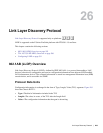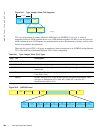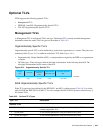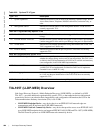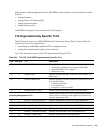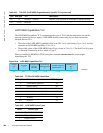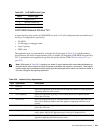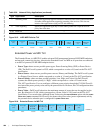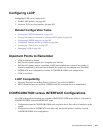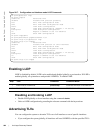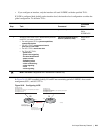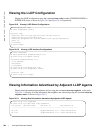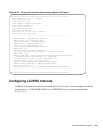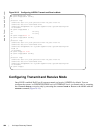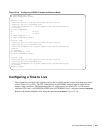Link Layer Discovery Protocol | 591
Configuring LLDP
Configuring LLDP is a two-step process:
1. Enable LLDP globally. See page 592.
2. Advertise TLVs out of an interface. See page 592.
Related Configuration Tasks
• Viewing the LLDP Configuration on page 594
• Viewing Information Advertised by Adjacent LLDP Agents on page 594
• Configuring LLDPDU Intervals on page 595
• Configuring Transmit and Receive Mode on page 596
• Configuring a Time to Live on page 597
• Debugging LLDP on page 598
Important Points to Remember
• LLDP is disabled by default.
• Dell Force10 systems support up to 8 neighbors per interface.
• Dell Force10 systems support a maximum of 8000 total neighbors per system. If the number of
interfaces multiplied by 8 exceeds the maximum, the system will not configure more than 8000.
• INTERFACE level configurations override all CONFIGURATION level configurations.
• LLDP is not hitless.
LLDP Compatibility
• Spanning Tree and Force10 Ring Protocol “blocked” ports allow LLDPDUs.
• 802.1X controlled ports do not allow LLDPDUs until the connected device is authenticated.
CONFIGURATION versus INTERFACE Configurations
All LLDP configuration commands are available in PROTOCOL LLDP mode, which is a sub-mode of
CONFIGURATION mode and INTERFACE mode.
• Configurations made at CONFIGURATION level are global, that is, they affect all interfaces on the
system.
• Configurations made at INTERFACE level affect only the specific interface, and they override
CONFIGURATION level configurations.



